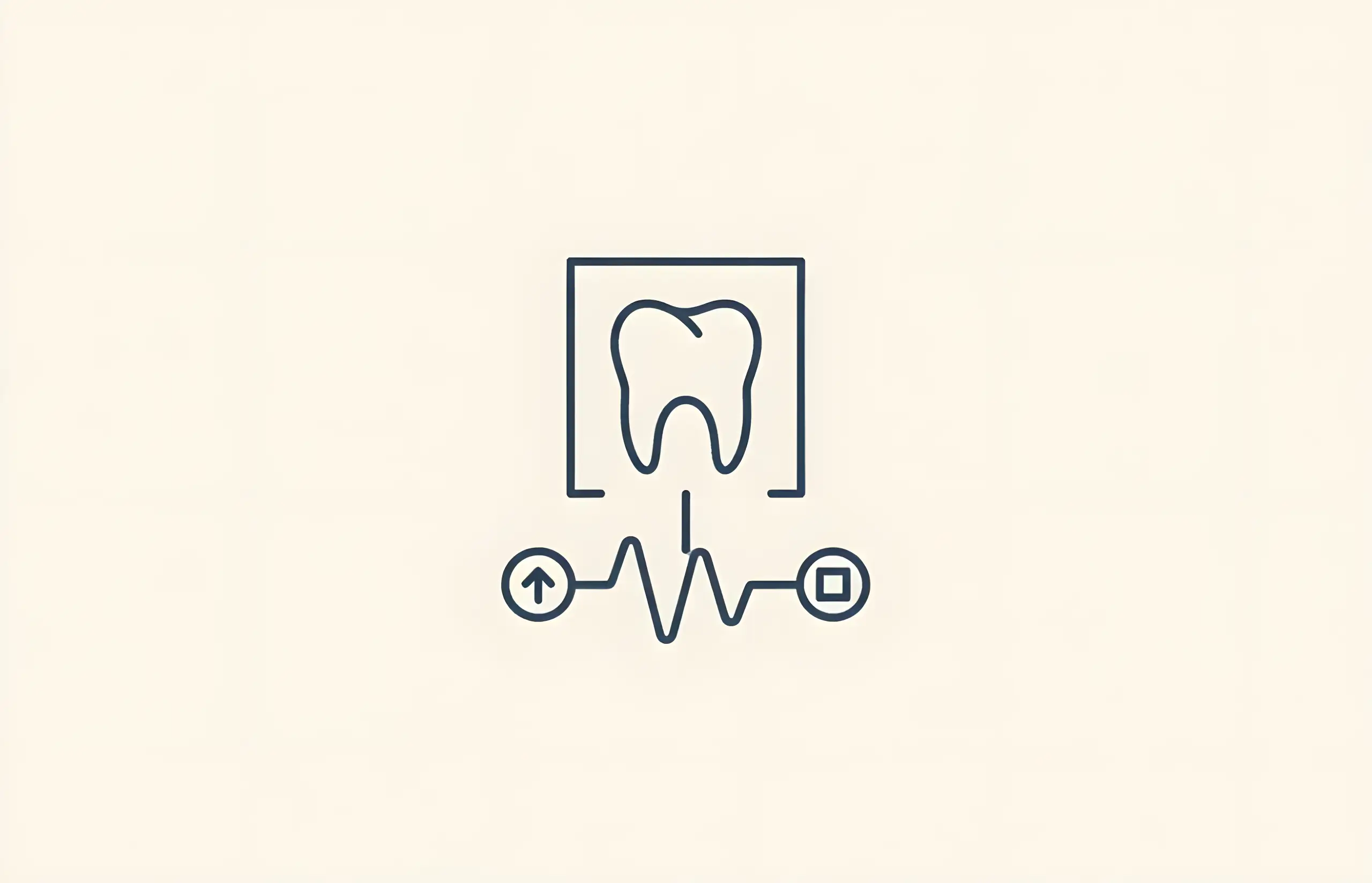It was once unthinkable to straighten a crooked smile without having to walk around with a mouth full of metal. With advances in dentistry, orthodontics, and 3D printing technology, there are now many options for straightening teeth at home using clear aligners. But how do you choose the right direct-to-consumer aligner service for your needs?
Direct-to-consumer clear aligner services have become increasingly popular, offering at-home starter kits for those who can't visit brick-and-mortar locations for teeth scanning. After initial impressions or scans, patients receive a series of clear aligner trays by mail. With remote guidance, most customers can expect to complete their treatments over 4-6 months.
These quick results, using invisible liners that can be worn discreetly to work and everywhere, have made at-home aligners extremely popular. However, not all services offer the same level of quality, supervision, or materials. Understanding the key differences can help you make an informed decision about your orthodontic care.
Professional Supervision: Orthodontist vs Dentist
One of the most important factors when choosing a direct-to-consumer aligner service is the level and type of professional supervision provided. The distinction between orthodontist and general dentist oversight matters significantly for treatment outcomes.
Orthodontist Supervision: Orthodontists have completed 2-3 years of additional specialized training beyond dental school, focusing exclusively on tooth movement, bite alignment, and facial development. This advanced expertise is particularly valuable for:
- Complex treatment planning
- Identifying contraindications
- Managing complications
- Optimizing tooth movement sequences
- Addressing bite issues
General Dentist Supervision: General dentists can supervise aligner treatment and many have additional training in orthodontics. While they may have less specialized expertise, dentists partnering with aligner companies often receive specific training in clear aligner therapy.
Research shows that 87.5% of direct-to-consumer aligner users are satisfied with treatment, but 6.6% experienced adverse effects severe enough to require dental intervention. The level of professional oversight—regardless of whether from an orthodontist or dentist—significantly impacts treatment safety and success.
Look for services offering:
- Initial comprehensive assessment
- Regular progress check-ins
- 24/7 access to professional support
- Clear communication channels
- Contingency plans for complications
Aligner Materials and Manufacturing Quality
The quality of materials and manufacturing technology directly affects treatment comfort, effectiveness, and safety. Understanding what makes quality aligners can help you evaluate different services.
Material Considerations:
All reputable services should use BPA-free plastics, but advanced materials offer additional benefits:
- Medical-grade polyurethane plastics: Offer superior clarity, stain resistance, and consistent force delivery
- Phthalate and paraben-free: Reduces exposure to potentially harmful chemicals
- Advanced proprietary materials: Some manufacturers develop specialized plastics with improved properties for tooth movement
Manufacturing Technology:
3D printing has revolutionized aligner production, but quality varies:
- In-house vs partnered manufacturing: Some services print aligners themselves while others partner with established manufacturers
- Quality control standards: Look for companies with rigorous quality assurance processes
- Precision and fit: Advanced manufacturing ensures better-fitting aligners with more predictable tooth movement
Research demonstrates that clear aligners can effectively align arches with 88% success rates, but material quality and manufacturing precision influence treatment predictability. Poorly manufactured aligners may cause discomfort, extend treatment time, or produce suboptimal results.
Delivery Methods and Treatment Logistics
How aligners are delivered affects treatment convenience, oversight opportunities, and completion time. Services typically offer two main approaches:
All Trays Upfront:
Receiving your complete set of aligners at treatment start offers:
- Uninterrupted treatment progression
- No delays from shipping issues
- Ability to advance immediately when ready
- Complete treatment visibility
This approach works well for compliant patients who will follow the prescribed wear schedule without additional oversight. However, it provides fewer built-in checkpoints for professional review.
Subscription-Style Delivery:
Receiving one or several trays at a time, similar to a mail subscription:
- Built-in progress checkpoints
- Opportunities for professional review between shipments
- Potential treatment adjustments if needed
- May extend total treatment time due to shipping
This method offers more supervision touchpoints but requires reliable postal service and may delay treatment if shipping problems occur.
Most direct-to-consumer services also offer at-home impression kits as an alternative to in-person scans. While convenient, at-home impressions carry higher risk of inaccuracies that can affect treatment quality. In-person scans using optical lasers provide more detailed mapping of your mouth's surface.
Cost Considerations
Direct-to-consumer aligners cost significantly less than traditional orthodontic treatment, typically ranging from £1,200-£3,500 compared to £2,000-£5,000+ for in-office care. Research shows cost is the primary reason nearly all users choose at-home options.
What Affects Pricing:
- Supervision level: More comprehensive professional oversight typically costs more
- Material quality: Advanced proprietary materials may increase costs
- Manufacturing technology: In-house 3D printing vs outsourced production
- Included services: Some packages include teeth whitening, retainers, or other extras
- Treatment complexity: Longer or more complex cases require more aligners
Value vs Cost:
While 87.5% of users report satisfaction, 44.5% would have preferred receiving treatment from a dentist or orthodontist if cost weren't a factor. Consider:
- Will the lower cost result in adequate supervision?
- Does the service use quality materials?
- What happens if complications arise?
- Are revision aligners included if needed?
Remember that about 33% of patients experiencing adverse events required additional corrective treatment, potentially increasing total costs significantly.
Making Your Decision
When evaluating direct-to-consumer clear aligner services, prioritize:
- Professional Oversight: Ensure qualified professionals (preferably orthodontists) will supervise your treatment with regular check-ins
- Material Quality: Confirm use of medical-grade, BPA-free materials with proven safety records
- Manufacturing Standards: Look for advanced 3D printing technology with quality controls
- Support Availability: Choose services offering accessible customer support and professional consultation
- Total Cost Transparency: Understand what's included and potential additional costs
Most importantly, consult your dentist before starting any at-home aligner treatment. Professional evaluation can identify contraindications like periodontal disease, bone loss, or complex malocclusions that require supervised orthodontic care.
While direct-to-consumer aligners offer convenient, affordable teeth straightening for appropriate cases, the quality of service, materials, and supervision varies significantly between providers. Taking time to understand these differences will help you choose the best option for your orthodontic needs and ensure safe, effective treatment.
Sources and References
-
[1]
Direct-to-Consumer Orthodontics: Surveying the User ExperienceJournal of the American Dental Associationhttps://pmc.ncbi.nlm.nih.gov/articles/PMC7391059/
-
[2]
Efficacy of clear aligners in controlling orthodontic tooth movement: A systematic reviewThe Angle Orthodontisthttps://pmc.ncbi.nlm.nih.gov/articles/PMC8610387/
-
[3]
Adverse Events Related to Direct-To-Consumer Sequential Aligners—A Study of the MAUDE DatabaseDentistry Journalhttps://pmc.ncbi.nlm.nih.gov/articles/PMC10378056/
-
[4]
Effectiveness of clear aligner therapy for orthodontic treatment: A systematic reviewOrthodontics and Craniofacial Researchhttps://pubmed.ncbi.nlm.nih.gov/31651082/
All sources accessed and verified on . Medical information reviewed for accuracy and compliance with current guidelines.
Related Articles

A Guide to Adult Orthodontics
Comprehensive information about orthodontic treatment for adults, including treatment options, costs, and what to expect

Can You Straighten Your Teeth At Home?
Complete guide to at-home teeth straightening including clear aligner options, effectiveness compared to traditional braces, safety considerations, and professional versus mail-order treatment

Teeth Straightening – Costs & Information
Comprehensive guide to teeth straightening options including braces, aligners, and surgery with detailed cost information and treatment comparisons
About The Dental Guide
The Dental Guide is a trusted online resource providing evidence-based information about dental health, treatments, and procedures. Our content is created and reviewed by qualified dental professionals to help you make informed decisions about your oral health.
Our Mission
- Evidence-based dental information
- Expert-reviewed content
- Clear, accessible explanations
- Latest treatment options
- Patient-focused guidance
Editorial Standards
- GDC-registered dental professionals
- Peer-reviewed sources
- Regular content updates
- Medical accuracy verification
- Transparent authorship
Important Notice
The information on The Dental Guide is for educational purposes only and should not replace professional dental advice. Always consult with a qualified dentist for diagnosis and treatment recommendations tailored to your individual needs and circumstances.
Medically Reviewed
Reviewed by Dr. Nasim Mechoui , BDS (Bristol)
Share this article
Comments & Discussion
Have questions about dental implants? Share your thoughts or experiences.
